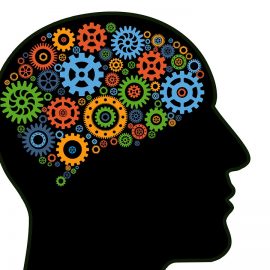

This article is an excerpt from the Shortform book guide to "The Laws Of Human Nature" by Robert Greene. Shortform has the world's best summaries and analyses of books you should be reading.
Like this article? Sign up for a free trial here .
Is there such a thing as healthy narcissism? How can someone become a healthy narcissist.
Healthy narcissism is when a narcissist uses their strong self image and projects outward, casting empathy so that they’re not the center of attention. All narcissists should strive for healthy narcissism.
Read more about healthy narcissism and how to achieve it.
Healthy Narcissism: Become More Empathetic
We should all strive for healthy narcissism. Healthy narcissists achieve their strong self-image and outward focus by mastering empathy, which is concentrating on others instead of themselves. Everyone has the potential to be empathetic because reading other people and thinking like them used to be critical to our survival. If we couldn’t communicate or cooperate, we would die.
In modern life, however, we don’t need this kind of empathy to survive—we don’t die if we misread someone’s mood. As a result, people are less empathetic than they used to be. Studies have shown that since the 1970s and especially since 2000, young people are more narcissistic. There are two other factors that likely play a role in increasing narcissism:
- Advances in technology. Like any skill, practicing empathy requires focus, and phones regularly interrupt in-person interactions.
- Increasing value on individualism. Individualism—focusing on ourselves, our rights, and our opinions—by nature requires self-involvement.
Because social interaction is a fundamental need, this increased self-absorption is bad for our brains. It’s bad for society too—it makes people resistant to or disbelieving of the opinions of others.
To develop the latent empathy that resides within us all, develop four empathetic skills:
Skill #1: Attitude
Most people assume that they understand others and quickly judge them, but to develop your empathetic attitude, you must let go of this assumption. Assume you’re ignorant, you have biases, and people don’t have the same values as you.
Additionally, become aware of the attribution bias, which states that when you make a mistake, you chalk it up to circumstances, but when others make a mistake, you think it was because they’re flawed. Instead, when someone makes a mistake, consider their circumstances, the same as if you were evaluating your own mistake.
Finally, accept yourself and your flaws. If your self-image is inaccurately superior or insecure, you’ll have a hard time being empathetic with anyone. This is one part of healthy narcissism.
To practice this skill, in your everyday conversations, listen to others instead of talking. Listen well enough that later in the conversation, you can refer back to things the other person has said or implied. This is part of becoming a healthy narcissist.
Skill #2: Mirroring
When someone near us is feeling or showing an emotion (for example, showing disappointment by frowning), we tend to pick up the emotion and feel it too. This is because when we watch someone do something, mirror neurons fire in our brains as if we were also doing the same thing ourselves. This firing generates the corresponding emotion.
The goal of mirroring is to translate our physical mimicking of others into an understanding of what they’re feeling and what they want. What people say aloud isn’t necessarily true, so instead pay attention to how they make you feel—intentions are driven by emotion, so if you can understand their emotions, you can figure out what they want.
To learn this skill and work toward being a healthy narcissist, you can do one or both of the following techniques:
1. Consciously mimic people’s facial expressions and body language to encourage your brain to fire the corresponding emotion so you can feel it and figure out what it is. (However, do this subtly, otherwise, you risk appearing creepy.)
- For example, if someone smiles, smile back.
2. Recall an experience you had that created the same emotion you think someone else is feeling.
- For example, when writer Alex Haley was researching his book Roots, which takes place partly belowdecks on a ship, he visited ships. Then, when he sat down to write, he could recall what being belowdecks felt like and empathize with his characters
Mirroring people will also encourage them to empathize with you. When two people are connecting, they both mimic each other, which is called the chameleon effect.
Caution! Don’t let yourself fall too deeply into another’s emotions or else you’ll lose the objectivity you need for analysis and risk losing control on your way to working on healthy narcissism.
Skill #3: Analysis
Analytic empathy is understanding someone based on their values, preferences, and family. This type of empathy is particularly effective when approaching people you don’t like or who are very different from you, because if you try to assign your own values or cultural norms to other people, you’ll never understand them and potentially cause conflict.
- For example, some people think that a man crying is sensitive; others think this is weak.
To practice this skill, collect information about people, usually via conversation, to discover what makes them unique. The most valuable pieces of information come from childhood because this is when people develop their core values, often influenced by their parents and siblings. Learning more about someone’s present relationships with their parents and siblings can tell you about what their childhood was like.
Additionally, look at how people react to authority figures—this will tell you about their tendency towards rebelliousness or submission—and who they choose as their partners.
Most people like talking about themselves, but if you have trouble getting someone to open up, ask open-ended questions, or offer up some information about yourself to gain trust.
Skill #4: Seek Feedback
To improve your empathy and become a healthy narcissist, you need feedback, and you can get it in two ways:
- Directly. Once you’ve guessed at people’s thoughts or feelings, ask them what they’re actually thinking and feeling to see if your assessment was accurate. This usually works best with people you trust.
- Indirectly. Notice how well certain techniques seem to be changing your rapport.
To improve the quality and variety of your feedback, interact with as many different people as you can.
Extended Example: Sir Ernest Henry Shackleton
Sir Ernest Henry Shackleton is an example of a healthy narcissist with a solid command of empathy. When Shackleton led an expedition to Antarctica and his ship became trapped in ice, he had to make the call to abandon the expedition—his dream—and find a way for himself and the crew to survive the winter. If they didn’t work together, they would die in the harsh climate. Shackleton used empathy to bring his crew together:
1. He knew that his emotions would affect the crew’s, so he demonstrated confidence and competence, both vocally and with his body language, to inspire the men to do the same.
* For example, the morning after abandoning ship, he got up early and made tea for everyone. He was optimistic as he served everyone.
2. He had to focus on both the group’s dynamic and individuals’ feelings. He assessed the group by taking note of the collective mood during work, mealtimes, and entertainment. He assessed individuals by reading their mood, trying to feel the same, and predicting what he (and therefore they) might do in the thrall of a particular emotion.
* Shackleton knew that Frank Hurley was a snob, so Shackleton shared a tent with him, which kept him away from the rest of the crew and also made him feel important because he was rooming with the leader.
3. He had to be gentle when someone was feeling low or something went wrong. Yelling at people wouldn’t improve things, so he’d either try to improve their mood or subtly isolate them so their mood didn’t spread to others.
* When Shackleton decided to try rowing to a nearby island, he knew he couldn’t leave Harry McNeish behind because he’d stir up trouble. However, McNeish didn’t like hard labor, and at one point, gave up on rowing. Instead of scolding him, which might make him rebel, Shackleton called for a break, saying that everyone, including himself, needed a rest.

———End of Preview———
Like what you just read? Read the rest of the world's best book summary and analysis of Robert Greene's "The Laws Of Human Nature" at Shortform .
Here's what you'll find in our full The Laws Of Human Nature summary :
- Why it's in your nature to self-sabotage
- How you behave differently when you're in a group
- Why you're wired to want the wrong things in life






